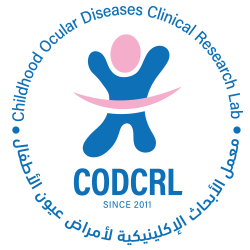
Retinopathy of Prematurity: A Guide for Pediatricians
- Upcoming Event Date: 07 Oct, 2020
Retinopathy of Prematurity: A Guide for Pediatricians
Introduction
Retinopathy of Prematurity (ROP) is a potentially blinding eye disorder primarily affecting premature infants. It occurs when abnormal blood vessels grow in the retina, the light-sensitive layer of tissue at the back of the eye. Early detection and timely intervention are critical to prevent vision loss in these vulnerable patients.
Risk Factors
ROP primarily affects infants born before 31 weeks of gestation or with a birth weight of less than 1,500 grams. Additional factors such as oxygen therapy, sepsis, anemia, and fluctuations in oxygen levels can exacerbate the condition.
Screening Guidelines
Early and systematic screening is vital for diagnosing ROP. The American Academy of Pediatrics (AAP) recommends screening all at-risk infants beginning at 4-6 weeks postnatal age or by 31-33 weeks postmenstrual age, whichever comes first. Pediatricians play a pivotal role in ensuring timely referral to pediatric ophthalmologists for these screenings.
Classification and Staging
ROP is classified into five stages, ranging from mild (Stage 1) to severe (Stage 5, retinal detachment). It is also categorized by zone (location of disease) and the presence of plus disease (vascular dilation and tortuosity). Understanding these classifications helps inform management decisions.
Management
Treatment options depend on the severity of ROP:
- Observation: Mild cases often resolve spontaneously.
- Laser Photocoagulation or Cryotherapy: For threshold disease to prevent progression.
- Anti-VEGF Therapy: Increasingly used for severe cases involving posterior disease.
- Surgical Intervention: For advanced stages with retinal detachment.
Prompt intervention can significantly improve outcomes, highlighting the need for interdisciplinary collaboration between pediatricians and ophthalmologists.
Role of Pediatricians
Pediatricians are crucial in identifying at-risk infants and coordinating care. Educating families about the importance of follow-up care and ensuring adherence to screening schedules are essential components of your role.
Conclusion
ROP is a preventable cause of childhood blindness if identified and managed early. Pediatricians serve as the first line of defense, ensuring timely screening and referral for at-risk infants. Collaborative care with pediatric ophthalmologists can help secure the best possible visual outcomes for these young patients.
For more information, screening guidelines, and resources, visit our website.

